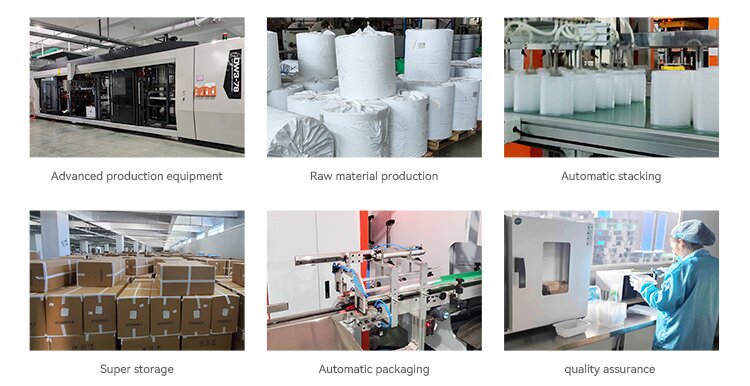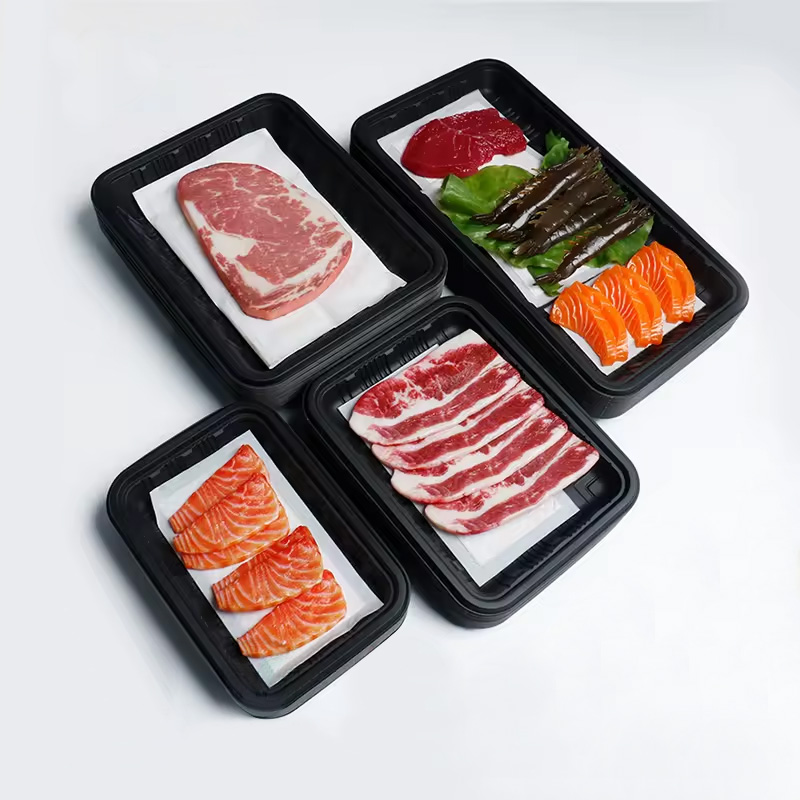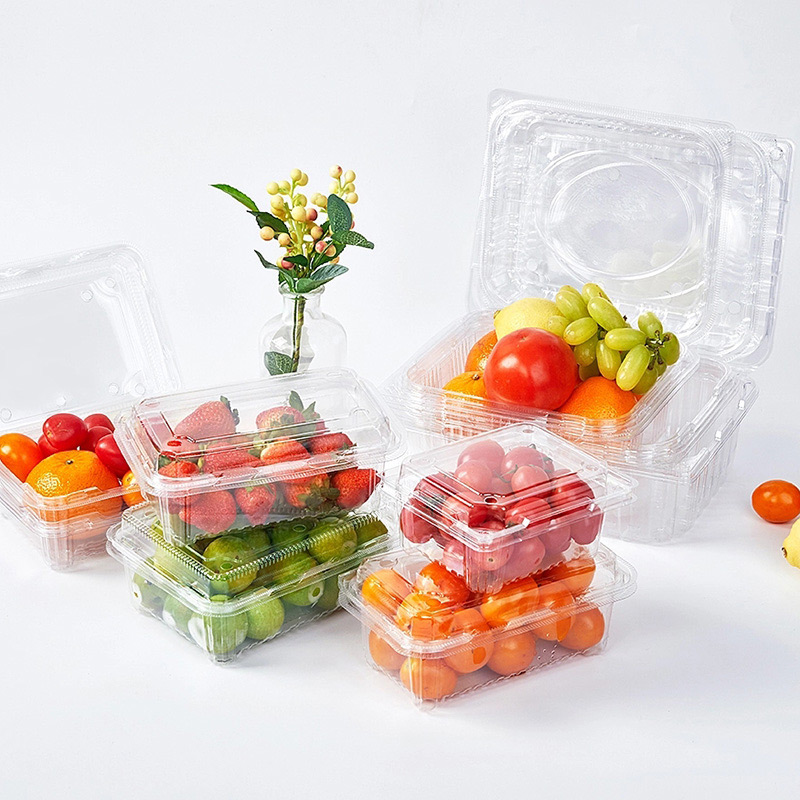In today’s competitive packaging landscape, blister packaging—also known as thermoforming packaging—has become an essential technology across diverse industries.
From food packaging and medical supplies to electronics and retail, thermoforming offers a powerful combination of:
- Product protection
- Clear product display
- Lightweight design
- Cost-efficiency
- Versatility across many packaging types
🔍 What Is Blister Packaging (Thermoforming Packaging)?
Blister packaging refers to a manufacturing process where plastic sheets are heated, shaped against a mold, and cooled to create rigid, protective packaging structures.
✅ Typical Applications:
- Food packaging (fruits, salads, bakery items, ready meals, frozen foods)
- Pharmaceuticals & medical devices
- Retail products (stationery, toys, cosmetics, tools)
- Electronics & hardware
🛠️ The Blister Packaging Process: Step by Step
- Material Selection
- Heating
- Forming (Vacuum / Pressure / Mechanical)
- Cooling
- Trimming & Cutting
- Optional Sealing with Lids or Films

🔑 Key Thermoforming Materials (Including PP!)
| Material | Features | Common Uses |
|---|---|---|
| PET | Crystal-clear, strong, recyclable | Cold food trays, bakery boxes, fruit containers |
| RPET | Made from recycled PET bottles, fully recyclable | Eco-friendly food containers, retail packaging |
| PP | Excellent heat resistance, microwave-safe, flexible, recyclable | Microwave meal trays, MAP packaging, compartment trays, cup lids |
| PLA | Compostable, plant-based, renewable | Sustainable packaging for dry food & salads |
| PS | Lightweight, cost-effective for disposable use | Low-cost containers, electronics inserts |
| CPET | High-temperature resistant, dual ovenable | Airline trays, ovenable meal trays |
✅ PP Material Spotlight:
PP (Polypropylene) is increasingly popular for thermoformed packaging due to:
- High heat resistance (up to 120°C)
- Microwave-safe, dishwasher-safe
- Excellent for gas-flushed MAP packaging and compartmentalized trays
- Lower carbon footprint compared to some plastics
🍽️ Extensive Blister Packaging Applications (More Than Just Fruits!)
✅ Xiamen Dashan’s Full Range of Thermoformed Packaging Products:
| Product Category | Key Materials | Features |
|---|---|---|
| Fruit Containers | PET, RPET | Clear, stackable, recyclable |
| Salad Boxes | PET, RPET, PLA | Leak-proof, eco-friendly options |
| Bakery & Dessert Boxes | PET, RPET | Visual appeal, secure sealing |
| Multi-Compartment Meal Trays | PP, CPET | Microwaveable, suitable for ready meals |
| MAP Food Containers (Modified Atmosphere Packaging) | PP | Gas-tight, extends shelf life, microwave-safe |
| Cup Lids for Cold & Hot Drinks | PET, PP | Strong, crack-resistant, fits tightly |
| Takeaway Trays (Airline, Bento, Catering) | CPET, PP | Heat-resistant, stackable, multi-purpose |
| Gift Packaging, Retail Blister Packs | PET, RPET | Customisable shapes and branding |
✅ Real Success Case: Dashan’s Blister Packaging Solutions for Diverse Markets
Xiamen Dashan, as a leading blister packaging manufacturer, supplies customized solutions across global markets:
1. PP Microwaveable Compartment Trays (MAP-Ready)
- Designed for ready meals, convenience stores, airlines
- Withstands temperatures up to 120°C (microwave, hot filling)
- Customizable with up to 5 compartments
- Popular with Asian & European meal kit brands

2. PET & RPET Bakery and Dessert Boxes
- Leak-proof, transparent, stackable
- One Southeast Asian bakery chain reported:
- 15% less food waste
- 20% higher product visibility and sales after switching to Dashan’s PET thermoformed packaging

3. PET Fruit Containers (Eco-Friendly Hero Product)
- 85%+ recycled content, fully recyclable
- Used by supermarkets for berries, grapes, and sliced fruit
- Example: Dashan’s D-Series holds up to 1000g, offers -20°C cold resistance, and is ready for export compliance

♻️ Sustainability: RPET & PP Lead the Way
Xiamen Dashan prioritises sustainability by promoting RPET and PP blister packaging:
- Annual capacity: 1,500+ tons of RPET production
- Over 85% of fruit, salad, and bakery containers now made from RPET
- PP trays reduce energy usage during manufacturing compared to some alternatives
- Products meet FDA, EU food contact, and global sustainability standards
🌱 Environmental Benefits of Dashan’s RPET Packaging:
Every 1,000 kg of RPET saves:
- 2,300 kg CO₂ emissions
- The equivalent of 48,000 PET bottles recycled
💡 Frequently Asked Questions (FAQ)
1. Is PP suitable for blister packaging?
Yes! PP is excellent for high-temperature applications like microwave meal trays, MAP packaging, and multi-compartment trays.
2. Which blister packaging materials are most eco-friendly?
RPET (recycled PET) and PLA are the leading sustainable options. PP also has a relatively low environmental footprint compared to many plastics.
3. Is blister packaging recyclable?
Yes, PET, RPET, and PP blister packaging are widely recyclable, depending on local facilities.
4. What packaging works best for microwave-ready meals?
PP and CPET blister packaging are ideal for microwaveable and ovenable applications.
5. Can blister packaging be fully customized?
Absolutely! Xiamen Dashan offers:
- Custom shapes & compartments
- Logo embossing
- Special features like leak-proof seals or tamper-evident closures
✨ Conclusion: Blister Packaging—Flexible, Reliable & Sustainable
Blister packaging, or thermoforming, remains a leading choice for both food and retail packaging due to its:
- Versatility across applications
- Clarity and strong product protection
- Recyclable and sustainable material options like RPET, PLA, and PP
Whether you need microwave-ready trays, fruit containers, bakery boxes, or MAP food packaging, blister packaging delivers unmatched flexibility and value.
✅ Partner with Xiamen Dashan for advanced, customised blister packaging solutions:
- PET, RPET, PP, CPET, PLA, PS—all in one place
- Industry-leading quality, certifications, and global export capacity
Explore more at www.dashanpacking.com
📑 References
- How Thermoforming Works
https://www.thermoforming.com/thermoforming-process/ - Sustainable Packaging Trends 2025
https://www.packagingstrategies.com/articles/packaging-trends-2025 - RPET Explained: Why It Matters
https://plasticsrecycling.org/rpet-benefits - Vacuum Forming vs. Pressure Forming
https://www.plasticforming.com/forming-methods-comparison/ - Food Packaging Safety Regulations (FDA)
https://www.fda.gov/food/packaging-food-contact-substances-fcs/packaging-and-food-contact-substances - European Food Safety Authority – Food Contact Materials
https://www.efsa.europa.eu/en/topics/topic/food-contact-materials - PLA Compostable Packaging Overview (European Bioplastics)
https://www.european-bioplastics.org/bioplastics/materials/pla/ - Modified Atmosphere Packaging (MAP) in Food Industry
https://www.fda.gov/food/food-science-research/modified-atmosphere-packaging-map-food-safety - Plastic Packaging Recycling Facts (Ellen MacArthur Foundation)
https://ellenmacarthurfoundation.org/topics/circular-economy-introduction/overview - Microwaveable Food Packaging: Materials and Safety
https://www.packagingdigest.com/food-packaging/microwaveable-food-packaging-materials-safety-2102
